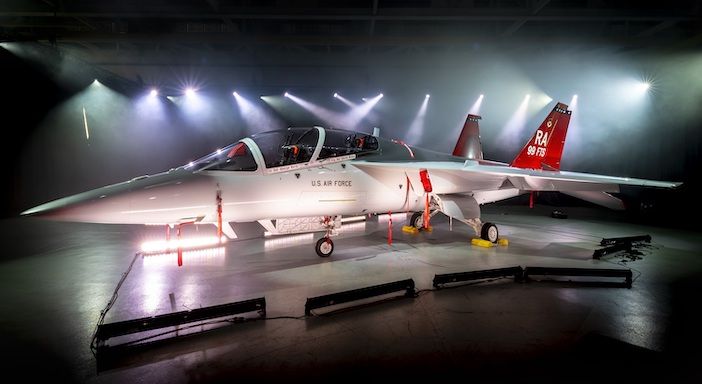by Paul E Eden
Boeing and its team mate Saab created the T-7A Red Hawk to satisfy the US Air Force’s requirement for an advanced jet trainer to replace the legacy T-38 Talon. Separated by six decades of fast jet evolution, the two designs are worlds apart.
The Red Hawk is designed to train pilots destined for the cockpits of fourth, fifth and even sixth-generation fighters, capable of high-g, high angle of attack manoeuvres inconceivable when Northrop designed the Talon. The T-7A must provide student pilots a feel for the rigors of combat flying to come.
On another level, the T-7A, T-38 and perhaps every other successful training aircraft must satisfy a set of more prosaic requirements, established through the use and abuse meted out over a century or more of military pilot instruction. Some landings are inevitably harder than others, but the real fatigue challenges on landing gear and attachment points come from the frequency of touchdowns.
Most Red Hawk sorties will likely include several circuits and touch-and-go landings and while front line pilots occasionally fly circuits, the majority of F-16 or F-35A flights are likely to include just one landing when the aircraft is light on fuel at the end of its mission.
Therefore, the T-7A is built to withstand heavy landings, lots of landings and regular high-Alpha and high-g flight. It is also built to fly several times daily and be maintainable and serviceable. These operational design drivers, combined with the fact that Boeing has created the T-7A as the flyable component of a digital training system, mean that this is a ground-breaking program, even more so because the T-7A is the result of a pioneering digital engineering concept.
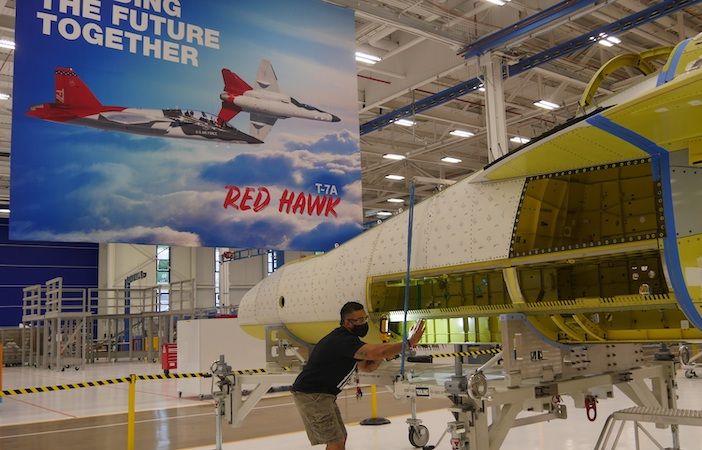
On 14 September 2020, then Secretary of the US Air Force Barbara Barrett defined in her Air Force Association, Air, Space and Cyber Conference keynote speech a new aircraft engineering and trials concept.
She described a process of digital prototyping and ascribed the term “eSeries” to the aircraft designed under this new digital regime, before announcing: “The first eSeries designator is awarded to an aircraft that was designed, built and tested using digital engineering: the T-7A, the Red Hawk.”
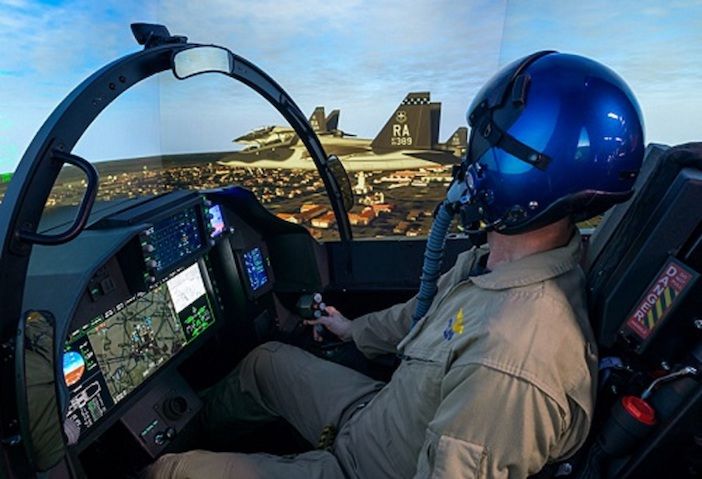
Model calibration
Boeing and Saab are defining a digital lifetime for the aircraft that must include new trials processes in keeping with its digital design philosophy. Paul Niewald, vice president / program manager of T-7 programs and former T-7 chief engineer at Boeing says, “The T-7 is enabled to have a digital life. We have digital models and as we go through the program our testing is calibrating those models, helping us refine our understanding along the way.
“Once the aircraft are delivered and progress through their operational lives, we will collect and download data that will help us understand how those airframes have been used and further calibrate the models to reflect fleet usage.
“Fatigue spectrums are compiled based on the best knowledge for how airplanes will be used, but it is only ever a good guess. When a new aircraft is delivered to the operator, they begin to understand its capabilities and how they want to use it, and they tend to use it differently to how they anticipated. The data we’ve captured is then very valuable. We can put it back into the model and help inform the operator going forward.”
The fatigue spectrum for the T-7 is not unusual in being based on how much g the aircraft is expected to pull and how often, how many landings it is expected to perform and the mission profiles it is anticipated to fly. The spectrum is used as the basis of fatigue testing, calibrated to analytical and product models.
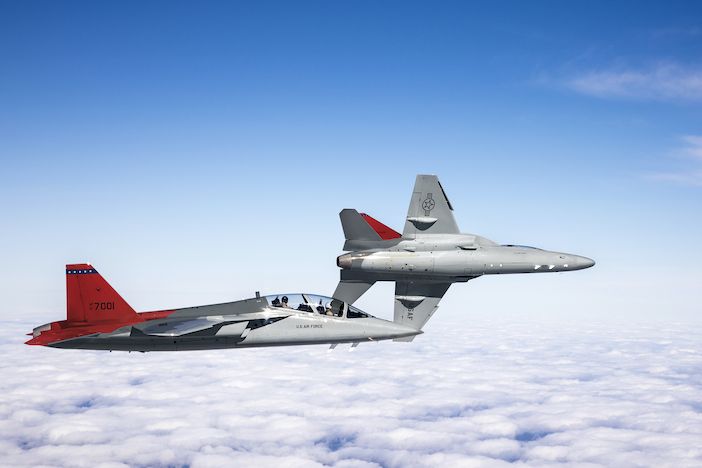
The first production T-7A rolled out during April at Boeing Defense, Space and Security, St Louis, Missouri. The aircraft will be subject to ground checks and taxi tests ahead of its first flight, before deploying to Edwards Air Force Base, California to begin full flight testing later this year. Meanwhile, fatigue trials are already in the advanced planning stages.
Niewald says, “We have a dedicated fatigue test article that will go into a trials fixture and be flexed through the equivalent of three lifetimes over several months. With the testing complete, we’ll keep the article because these things can be useful later.
“We may see something in the fleet and go back to the fatigue article to look at different aspects that may not have been considered before. Also, the T-7 was designed with growth in mind and if there are growth configurations, the fatigue test article may help inform them or provide other trials opportunities, depending on what they are.”
Boeing employs two test articles, fully representative airframes minus subsystems. The fatigue article is mounted into a fixture with load pads installed around the aircraft and driven by a program based on a model created to match the fatigue spectrum of the expected mission profile. It moves constantly, including short and long duration inputs and multiple scenarios. The second article, for static trials, will undergo several known load conditions at 115% and 150% design limit load.
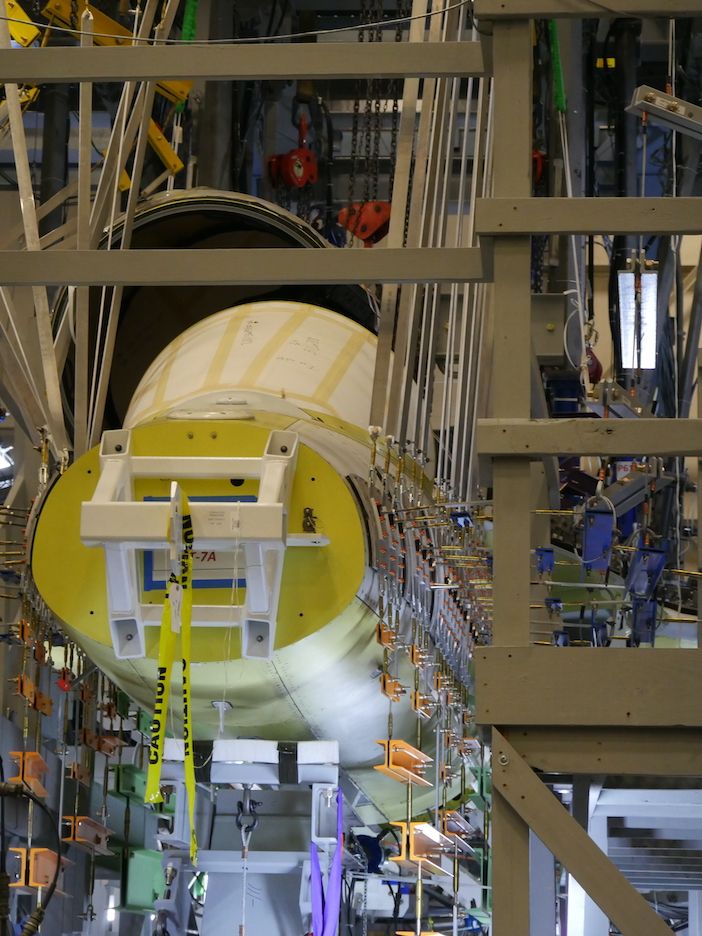
St Louis
Other T-7 components such as the landing gear are tested separately. Niewald continues, “The landing gear goes through its own spectrum, based upon the expected number of landings, aircraft sink rate and other factors.
“A training aircraft takes several landings per sortie and we designed the T-7 to fly three or four times every day. With student pilots at the controls you have to expect some harder landings and landings at heavier weights as they practice with larger fuel loads. It is accommodated within the landing gear fatigue spectrum, which is a little more severe than for a regular jet.”
The T-7’s landing analysis approach is based on that of the F/A-18 Hornet’s to reduce risk. As such, it is robust and extremely well proven, at sea and on land, although the Red Hawk is a US Air Force jet and therefore not envisaged for carrier operations.
Digital journey
Modern flight test generally confirms data gathered and predictions made during the modeling process. An early high-Alpha wing rock issue affecting the two pre-production T-7 airframes was remedied with a software modification. The aircraft’s digital origins facilitates these types of fix and also renders the flight trials process even more intuitive. The same is true for fatigue testing on the ground.
Niewald confirms, “There are some good opportunities as we continue along the digital engineering journey as to how we correlate the models to testing, to the real environment, and learn from T-7 fatigue testing for the future. We will apply techniques from the T-7 trials to see how testing might be reduced going forward, how we can tailor spectrums to make them smaller and more precise, so that instead of months of testing we can accelerate the process.
“For me, digital engineering helps and informs the test process, but also allows us to do things much earlier in the development cycle. I’m hoping there are things from the T-7 that we can leverage and apply to future platforms.”
The T-7 is clearly more than a new training jet and represents a new way to develop aircraft. It also ushers in revised techniques for how aircraft are tested. “It’s a digital pathfinder on many fronts,” Niewald says. “There’s a digital thread that runs through the program’s design, build, test, train and sustain aspects.
“Currently we are in the test phase, assessing how the digital models inform how we test, how we instrument, what test points we go to and where the areas of uncertainty are. There are so many opportunities to learn and leverage what we have learned for the next opportunity.”
The new digital regime also means that lessons may be applied more quickly, believes Niewald. “There is more information with the digital models as the authoritative source, and that enables us to see the consequences of changes. There is more data, we are more informed, and that means we have much
more confidence.”
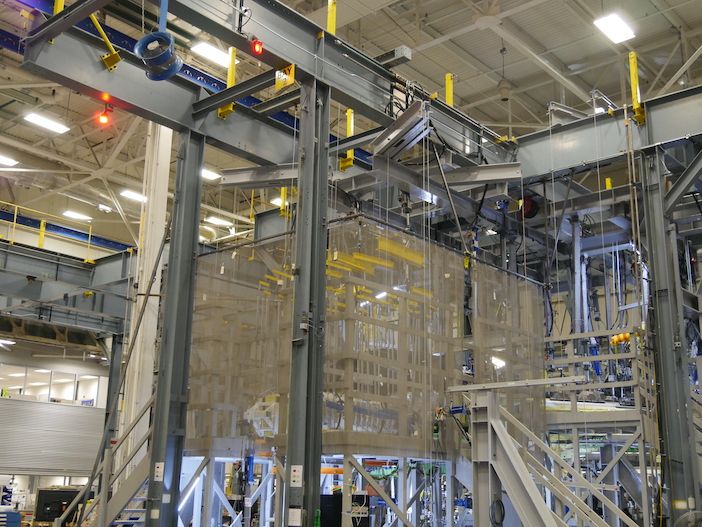
sub-systems: they will undergo several known
load conditions during
static trials
An important product of the fatigue test program is a calibrated fatigue model. It will inform US Air Force T-7A operations, but also has a role to play should additional customers or requirements emerge. It takes little imagination to foresee future Red Hawk light fighter or adversary training variants, equipped with external weapons or podded equipment. “In that case,” Niewald says, “we would look at what has changed, and what the new loadings represented, using our calibrated fatigue model. Then we could assess whether further testing was required.”
The correlated analytical static and fatigue models mean some modifications could be assessed through digital analysis in combination with only limited physical testing – of a pylon attachment, for example.
Lifetime data
Service entry for the T-7A is expected in 2023. The flight test program will be complete, but as a digital aircraft the T-7A will operate in parallel real world and digital fleets. Each jet will be equipped with sensors that constantly gather data for download and analysis, powering predictive maintenance and helping monitor individual airframe and fleet health. The aircraft will gather data on fatigue and other parameters throughout its life which means, in essence, that the test program never ends, with learning continuing until the jet leaves service.
Interestingly, the g data gathered will include not only loadings but also the frequency and duration of those loads. It will track how many times the aircraft goes to a specific g level and what that level was, helping engineers understand the effects on individual airframes.
“The fatigue data will help inform our aircraft structural integrity program. It will show if the airframes are being flown more severely than we modelled, as well as identify emerging issues long before they become a problem,” explains Niewald.
“The aircraft structural integrity program identifies data by tail number within the fleet, so we can easily identify the fleet leader. It means we can recognize that and keep it as the fleet leader and watch how it behaves or make decisions on rotating aircraft to manage their lives much better.”
The high-fidelity digital twins of each T-7 provide an extraordinary level of confidence, helping Boeing advise its customer more accurately than ever before. Based on its digital design and engineering, Niewald believes that “the T-7 program is enabled to lead in this type of fleet fatigue monitoring.”
Setting aside the fact that the T-7 Red Hawk program is pioneering new design, engineering and trials techniques, as well as ushering in a dramatic new networked training capability, there will be inevitable comparisons between it and the iconic T-38. But the T-7 is designed for high-Alpha and frequent g loadings. These are built into the spectrum against which the fatigue test article is being trialed, which also accounts for hard and frequent landings. Gathered data will support the aircraft structural integrity program so that trending effects caused by changes in use will show on the fleet early, avoiding the emergence of structural issues later in life, or at least predicting them early enough for inspections to be scheduled or fixes designed and implemented before availability is affected.
Fatigue testing is but one component within an aircraft test program, but Boeing is realizing new possibilities and exploring new techniques driven by the T-7’s digital design. Along with Saab, the company is building an aircraft designed to step into the large shoes of the T-38 Talon, but it is also heralding a new era in fast jet design, engineering and trials.


